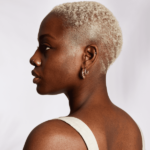
How to Pair Them How Often to Use Them Side Effects The Final Takeaway
If you’re starting to use retinol, you may have heard a few key tips that dermatologists recommend following: Start slowly, always wear SPF, and don’t mix it with other harsh ingredients. While the first two are fairly universal and easy to follow, the last one can be a bit more subjective, especially if you’re trying to figure out where retinol best fits into your routine. «Skin cycling» has taught us never to alternate the nights we apply retinol and exfoliating acids, and if you use vitamin C, the general advice is to use that product in the morning and retinol at night—but what about niacinamide? Derms actually say that this discoloration-fighting antioxidant deserves a spot in everyone’s routine—especially when using a retinoid. Ahead, learn all about using retinol and niacinamide together, from the benefits to how to incorporate them.
About Retinol
Largely considered the gold standard of skincare, retinol is a form of vitamin A that offers a whole host of benefits. The ingredient stimulates cellular turnover—meaning that it brings fresh, healthy cells to the surface to replace dead, dull ones—and can help with a wide range of skin concerns, including acne, fine lines and wrinkles, dullness, and discoloration.
With all that power, though, comes a fairly high potential for irritation. Certain sensitive skin types may want to opt for a gentler alternative, like plant-based bakuchiol or retinyl palmitate. No matter what type of retinoid you’re adding, start slowly—apply a pea-sized amount to your face and neck once a week, and work your way up to using it more frequently as your skin builds tolerance.
Because retinol makes skin more sensitive to the sun, use it at night and coat your skin with a generous amount of SPF during the day. “Retinol can increase sensitivity to ultraviolet light, so if you’re using a regimen that involves any retinol or retinoid, there should always be a broad spectrum SPF 30 applied in the morning as well,” explains board-certified dermatologist Rachel Nazarian, MD.
About Niacinamide
Niacinamide is a form of vitamin B3 known for its anti-inflammatory properties. “It’s great for acne, rosacea, hyperpigmentation, dark spots, or anyone looking to improve their skin texture and hydration,” says board-certified dermatologist Jessica Dowling, MD. In recent years, niacinamide has begun to buzz as a gentler alternative to vitamin C, as it offers similar brightening and protective benefits with a lower risk of irritation.
In addition to helping with these existing concerns, niacinamide offers preventative benefits, too. It’s a powerful antioxidant, which means that it protects against environmental stressors (like pollution and UV damage) that cause visible signs of aging. Though niacinamide is unlikely to cause a reaction, Nazarian recommends adding it to your morning routine and opting for a formula with a concentration of 5% or lower to maximize its defenses and avoid irritation.
Can You Use Them Together?
Not only can you use retinol and niacinamide together, but both derms agree that you probably should. “Using retinol and niacinamide simultaneously can actually be a really wonderful combination for your skin,” Nazarian says. “I like to think of it as a ‘multitasking multivitamin’ for your skin.”
Benefits of Pairing Retinol and Niacinamide
These two powerhouse ingredients are better together for several reasons, with a few of the main perks being as follows:
More potency
Retinol and niacinamide both target acne, signs of aging, hyperpigmentation, and sun damage, so when you combine them, you’re essentially getting a double dose. “There are even medical studies that have shown that the two can be used together quite safely for enhanced benefits when treating conditions like acne or hyperpigmentation,” Nazarian says.
What’s cool, though, is that each ingredient targets these concerns in a slightly different way. Retinol tackles hyperpigmentation by stimulating cell turnover, while niacinamide does it by inhibiting melanin production. Combining retinol’s pore-unclogging benefits with niacinamide’s inflammation-fighting abilities helps keep all types of acne at bay, and on the skin-firming front, retinol boosts collagen, while niacinamide strengthens the skin barrier to keep your complexion hydrated and plump.
Less Irritation
There are a number of different ways to offset the irritation that often comes with adding retinoids to your routine (like using it less frequently, or trying the “retinol sandwich” method), but pairing it with niacinamide is one of the best. According to Nazarian, niacinamide’s anti-inflammatory benefits make for a great foil to the inflammatory response and weakened skin barrier that can happen as a side effect of using retinol.
"Niacinamide has been proven to improve skin hydration and help repair the skin’s barrier while also soothing redness," Dowling adds. "I particularly recommend adding niacinamide to a skincare regimen for anyone who has a difficult time tolerating topical retinol."
How To Use Niacinamide and Retinol Together
- Find a combined product: The best way to pair these two ingredients also happens to be the simplest: Opt for a formula that has them both. “This ensures that the two versions of each ingredient blend well, are stable, and don’t have other ingredients that may negate their benefits,” Nazarian says. Serums, by nature, offer a higher concentration of active ingredients and will pack the biggest punch in terms of effectiveness, but if you have sensitive skin, she recommends opting for a lotion or cream.
- Apply thinnest to thickest: If you’re planning to use two separate products, there are a few different ways to do it. Generally speaking, apply your formulas from thinnest to thickest (water-based toners and essences go before serums, which go before moisturizers, etc.). But if you’re using two products with the same format (a retinol serum and a niacinamide serum, for example), the order you layer them on doesn’t matter all that much—with some caveats.
- When in doubt, start with retinol: “Retinoids work at their strongest capacity when they’re applied to clean skin, so will therefore be the strongest when applied before any other skincare product,” Dowling says. “If you’re using retinol without a problem and looking for an extra boost to reduce redness or improve skin hydration, then I would recommend applying niacinamide after your retinol.”
- Try niacinamide first to combat sensitivity: Experiencing sensitivity? Switching the order might be worth a try. “If you’re having difficulty tolerating your retinol—whether [you’re experiencing] excessive dryness or skin peeling—a product containing niacinamide can be applied to the skin first, which will dilute the amount of retinol reaching your skin and make the retinol more tolerable,” Dowling tells us.
- Don’t forget sunscreen: Also, it’s worth mentioning again: Any time you’re using a retinoid, you need to be extra diligent about applying SPF during the day to keep your skin protected.
How Often Can You Use Retinol and Niacinamide?
Both dermatologists confirm that retinol and niacinamide are safe to use together every day, but that’s only if your skin can tolerate it. “Listen to your skin—if your retinol is causing some flaking or dryness, even when paired with niacinamide, then decrease the days per week you are using it,” Dowling says. “Never apply retinol to skin that is already irritated or dry.” If you’re new to retinol, start slowly, but if your skin’s already adjusted, you should be able to add a daily dose of niacinamide into your regimen with no problem at all.
Side Effects
As great as retinol and niacinamide are together, it is possible to have too much of a good thing. “This is particularly true when it comes to skincare—higher concentrations of an ingredient and adding more products to a skincare regimen does not always equal happier skin,” Dowling says. She explains that products with high concentrations of niacinamide (above 5%) or retinol may cause excessive irritation and dryness, and using two active ingredients together ups your potential for a reaction. Additionally, “not all products are created the same, and there may be other active ingredients or inactive ingredients in a product that could be causing your skin irritation,” she tells us.
With that in mind, Dowling recommends working with a dermatologist to optimize your regimen and ensure that every product you’re using serves its intended purpose. If a derm appointment isn’t in the cards, patch-test new products on your arm before you put them on your face. When using two separate retinol and niacinamide formulas, test them separately to ensure they aren’t irritating on their own (this is essential before you use them together).
The Final Takeaway
Whether you’re looking to up the ante on your acne-fighting or anti-aging routines or hoping to offset the usual retinoid-induced irritation, retinol and niacinamide are a dynamic duo worth using together. Follow the above recommendations on how to use them, consult your dermatologist to develop the best regimen for you, and don’t forget to listen to your skin—it will do a good job of filling you in on whether this pairing is working. If, after a few weeks, your complexion has a smooth, glassy finish (sans irritation), you’ll know this «multi-tasking multivitamin» is worth committing to for the long haul.


